|
81. Erebia ligea (Linnaeus, 1758) / Arran brown / Nymphalidae – Satyrinae
NL: boserebia / D: Weiβbindiger Mohrenfalter, Groβer Mohrenfalter / F: moiré blanc-fascié, le grand moiré
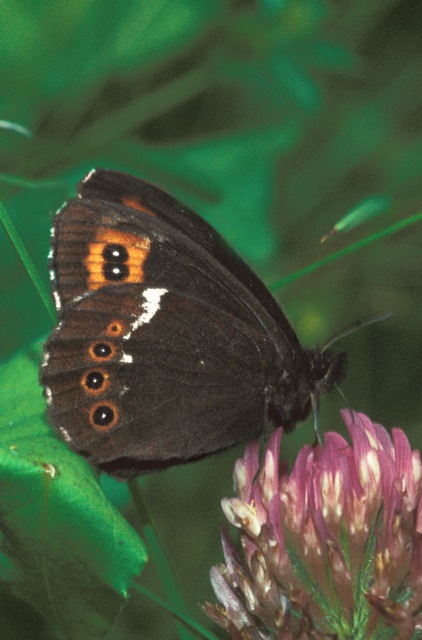  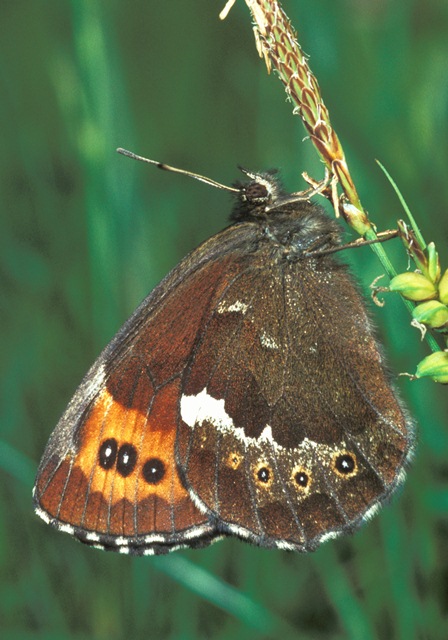
Photographs: Frits Bink ©.
Medium-sized, wing length 24 (21-26) mm. The species occurs in the Benelux in a few sites in the Ardennes near the German frontier. It inhabits woodland edges and tall grass vegetation of purple moor grass near raised bogs.
Butterfly is on the wing from mid-July until mid-August, peak late-July. The species is known from sub-continental to continental climates, amplitude 8 to 18, required heat sum 200°d and maximum tolerated 700°d to complete its two year life cycle. This corresponds with climate windows of 15 and 23 weeks.
The species is an Erebia, the larvae of which grow very slowly. They do not feed more than once a day for a short time. This particular behaviour is perhaps related to their slow working digesting system that depends on the activity of symbionts.
Ecological characteristics
Behaviour over time
Overwintering: first winter as egg attached on a straw near to the ground or as fresh hatched first instar larva, second winter as a larva in third instar, 12 mm in length.
Reproduction: oviposition starts after 3-4 days when the body contains 33 (24-42) eggs, estimated potential production 2.7 times as much.
Larval feeding periods: in second year 124 (113-134) days from April until September, in third year 62 (47-76) days from end-April until early-July.
Generations: one every two years.
Spreading of risk: not observed.
Life cycle: egg 37 weeks (larva inside the egg shell develops within 17 days); larva 64 weeks; pupa 16 (13-20) days.
Life span of adult: rather long, 3 weeks.
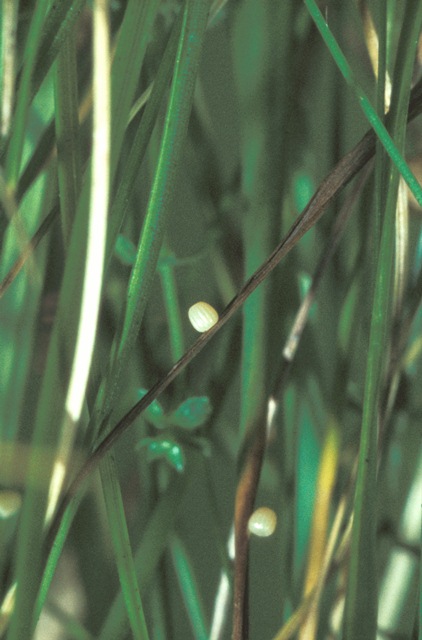 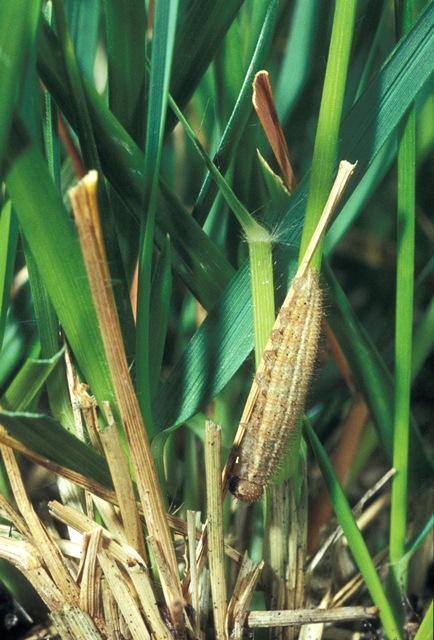 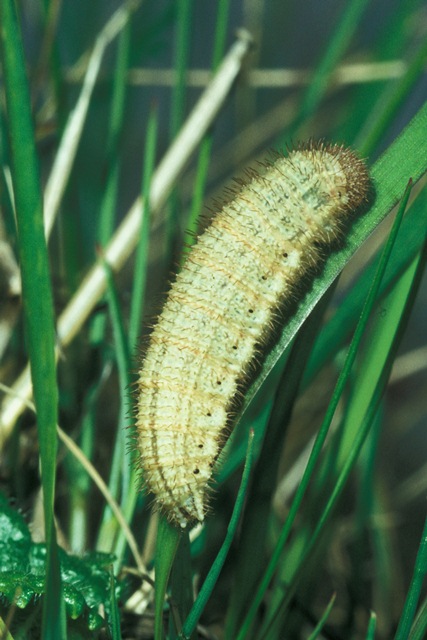
Photographs: Frits Bink ©.
Behaviour in space
From stay-at-home to migrant: stay-at-home, spatial requirement modest.
Finding a mate: male patrols.
Orientation in the landscape: edge of woodland, tall grass.
Oviposition: randomly laid on straw in carefully selected sites.
Defence
Threats from other organisms: vulnerable, avoidance in larval stage by hiding.
Threats from the environment: vulnerable to heat.
Feeding habits
Adult: nectar of any kind of flower, Arnica montana is one of the most used.
Larva: nearly fully grown larvae eat very hesitating, not more than half an hour per day. In spring the larvae bask, later in the season they become nocturnal.
Larval foodplants
Plant species: Poaceae, accepted in breeding experiments: Deschampsia cespitosa, Festuca rubra, Molinia caerulea, Sieglingia decumbens.
Journal
Rearing experiment based on specimens from Hohneck, Vosges, France:
23 July 1983: females captured (abundant in the mountains of the Vosges).
9 August: larvae were visible inside the eggs.
28 August: one egg hatched.
25 September: about 10 eggs have hatched, remaining 30 eggs still had not hatched.
Overwintered outdoors.
5 February 1984: all eggs in good condition, no more eggs had hatched.
13 February: pot with tussock taken indoor, eggs hatched, eggshell was opened laterally and was not consumed.
31 March: larvae first or second instar.
19 April: three larvae first instar, five second instar.
26 May: four larvae in third stage, 9 mm in length, two in moult L3-4.
16 June: one larva feeding.
13 July: all larvae in diapause in third instar.
Overwintered indoors.
6 March 1985: one larva active but not feeding. Transferred to Sieglingia decumbens.
11 March: another larva active.
16 March: one larva started to feed, in full sunshine.
24 March: larvae now 12 mm in length, probably fourth instar, basked and ate only small portions per day.
31 March: biggest larvae 17 mm in length.
5 April: both larvae in moult L4-5.
16 May: larva pupated.
23 May: adult appeared.
Table 81-1. Results of dissections

Table 81-2. Collection and observation localities
F, Vosges, Ballon d’Alsace, 1247 m, 47° 49’ 23”N – 6° 50 ‘ 47”E; 26July 1983.
F, Vosges, Chaume du Tanet, 1200 m, 48° 05’ 20”N – 7° 03’ 12”E; 26 July 1983.
F, Vosges, Grand Ballon, 1424 m, 47° 54’ 04”N – 7° 05’ 54”E; 26 July 1983.
F, Vosges, Hohneck, 1283 m, 48° 02’ 03”N – 7° 02 ‘ 27”E; 23 July 1983, 22 August 1984.
F, Vosges, Tourbière de Machais, 980 m, 48° 00’ 21”N – 6° 57’49”E; 24 July 1983, 23 August 1984.
EST, Pööravere 58° 40’ 25”N – 24° 36’ 50”E; 16 July 1999.
S, Hornslandet 61° 37’31”N – 17° 26’ 48”E; 17 August 1985.
S, Östhammar 60° 23’ 01”N – 18° 26’ 51”E; 19 August 1985.
S, Tännäs 62° 26’ 29”N – 12° 41’ 20”E; 15 August 1985.
Fig. 81-1. Erebia ligea, phenogram adapted from Ebert & Rennwald 1991b: 50.
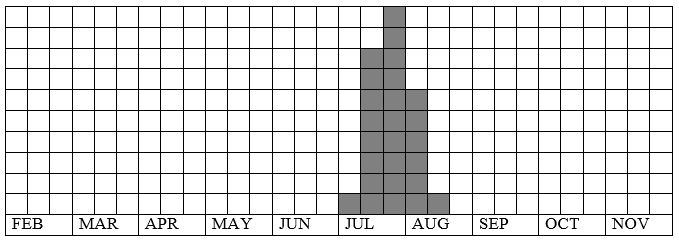
Fig. 81-2. Erebia ligea, habitat characteristics.
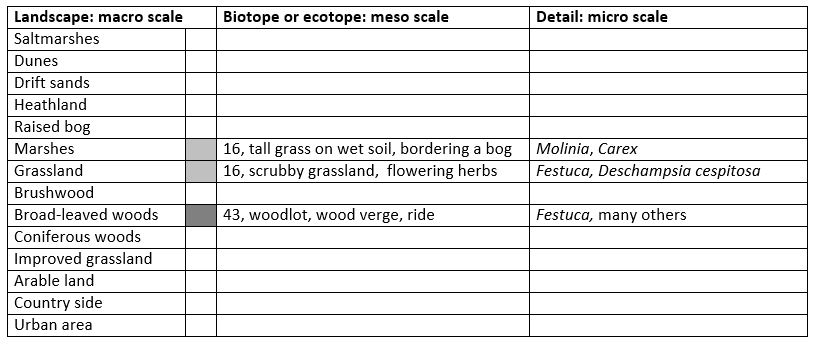
Fig. 81-3. Erebia ligea, climate matrix, heat-sums 200 - 700°d (2 years cycle).
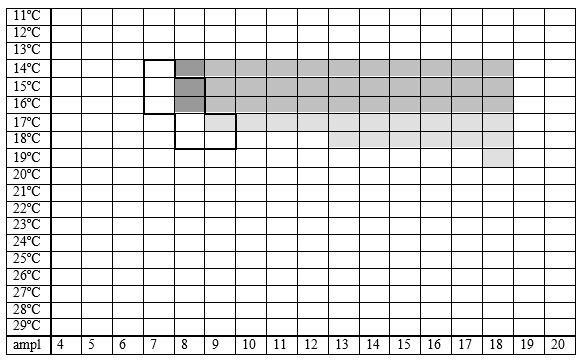
|











